 |
| 1 . |
|
1 meter = _____ centimeters. (Activity: Metric System Review)
| | 100 |
| | 1,000,000,000 |
| | 1,000 |
| | 1,000,000,000,000 |
| | 1,000,000 |
|
 |
| 2 . |
|
_____ are surface appendages that allow a bacterium to stick to a surface. (Activity: Prokaryotic Cell Structure and Function)
|
 |
| 3 . |
|
What is the function of a bacterium's capsule? (Activity: Prokaryotic Cell Structure and Function)
|
 |
| 4 . |
|
In eukaryotic cells the first step in protein synthesis is the _____. (Activity: Role of the Nucleus and Ribosomes in Protein Synthesis )
|
 |
| 5 . |
|
Which organelle plays a role in intracellular digestion? (Activity: The Endomembrane System)
|
 |
| 6 . |
|
The cilia and flagella of eukaryotic cells are composed of _____. (Activity: Cilia and Flagella)
|
 |
| 7 . |
|
Which of these cell junctions form a barrier to the passage of materials? (Activity: Cell Junctions)
|
 |
| 8 . |
|
The primary role of _____ is to bind animal cells together. (Activity: Cell Junctions)
|
 |
| 9 . |
|
_____ aid in the coordination of the activities of adjacent animal cells. (Activity: Cell Junctions)
|
 |
| 10 . |
|
Choose the letter that indicates the organelle that contains most of a cell's DNA. (Activity: Review of Animal Cell Structure and Function) 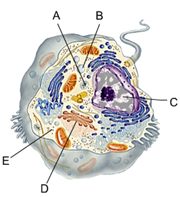
|
 |
| 11 . |
|
Which of these organelles carries out cellular respiration? (Activity: Review of Animal Cell Structure and Function)
|
 |
| 12 . |
|
Which of these is the double membrane that encloses the nucleus? (Activity: Review of Animal Cell Structure and Function) 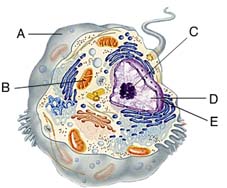
|
 |
| 13 . |
|
The _____ is composed of DNA and protein. (Activity: Review of Animal Cell Structure and Function)
|
 |
| 14 . |
|
Ribosomal subunits are manufactured by the _____. (Activity: Review of Animal Cell Structure and Function)
|
 |
| 15 . |
|
_____ are the sites of protein synthesis. (Activity: Review of Animal Cell Structure and Function)
|
 |
| 16 . |
|
Which of these is involved in the manufacture of membrane? (Activity: Review of Animal Cell Structure and Function)
|
 |
| 17 . |
|
The _____ is a selective barrier, regulating the passage of material into and out of the cell. (Activity: Review of Animal Cell Structure and Function)
|
 |
| 18 . |
|
Where is calcium stored? (Activity: Review of Animal Cell Structure and Function)
|
 |
| 19 . |
|
Which of these structures stores, modifies, and packages products? (Activity: Review of Animal Cell Structure and Function) 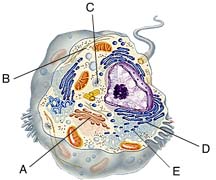
|
 |
| 20 . |
|
Which of these are hollow rods that shape and support the cell? (Activity: Review of Animal Cell Structure and Function)
|
 |
| 21 . |
|
_____ is/are identical in structure to centrioles. (Activity: Review of Animal Cell Structure and Function)
|
 |
| 22 . |
|
Which of these organelles produces H2O2 as a by-product? (Activity: Review of Animal Cell Structure and Function)
|
 |
| 23 . |
|
Which of these provides the cell with structural support? (Activity: Review of Animal Cell Structure and Function) 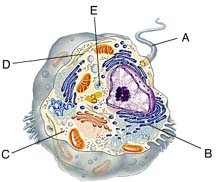
|
 |
| 24 . |
|
Which of these organelles is responsible for photosynthesis? (Activity: Review of Plant Cell Structure and Function) 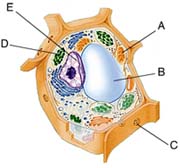
|
 |
|